- Global markets plunge after US equity slump on Wednesday
- Oil slides
- Bitcoin tumbles
- The US PPI release will be viewed with interest today after yesterday’s CPI surprise.
- Bank of England Governor Bailey speaks today.
- On Friday, the ECB Monetary policy statement is released.
- US retail sales figures are reported on Friday.
- Futures on the S&P 500 Index decreased 0.3%.
- The FTSE 100 Index dropped 1.9%.
- The STOXX 600 Index declined 1.3%.
- The MSCI Asia Pacific Index fell 1.4%.
- The MSCI Emerging Market Index dipped 1.2%.
- The Dollar Index declined 0.1%.
- The British pound was little changed at $1.4061.
- The euro jumped 0.2% to $1.2098.
- The onshore yuan strengthened 0.1% to 6.452 per dollar.
- The Japanese yen was little changed at 109.64 per dollar.
- The yield on 10-year Treasuries sank one basis point to 1.68%.
- The yield on two-year Treasuries decreased less than one basis point to 0.16%.
- Britain’s 10-year yield gained one basis point to 0.893%.
- Germany’s 10-year yield increased one basis point to -0.12%.
- Japan’s 10-year yield climbed one basis point to 0.092%.
- West Texas Intermediate crude declined 1.5% to $65.06 a barrel.
- Brent crude declined 1.5% to $68.29 a barrel.
- Gold strengthened 0.2% to $1,818.52 an ounce.
Key Events
On Thursday, futures on the Dow, S&P, NASDAQ and Russell 2000 were all trading in the red and European shares opened lower, with global stocks at their lowest since early April. Spiking US inflation heightened concerns that the economic recovery may be at an impass.
Treasury yields rallied.
Global Financial Affairs
Global markets remain under pressure with the MSCI World Index lower for the fourth consecutive day. In Europe, the STOXX 600 Index dropped 1% right out of the gate, weighed by slumping commodity prices and a strengthening dollar, after US consumer prices recorded their biggest jump in in almost 12 years in April, reigniting concerns that the Fed will have to backtrack on its promise and raise interest rates.
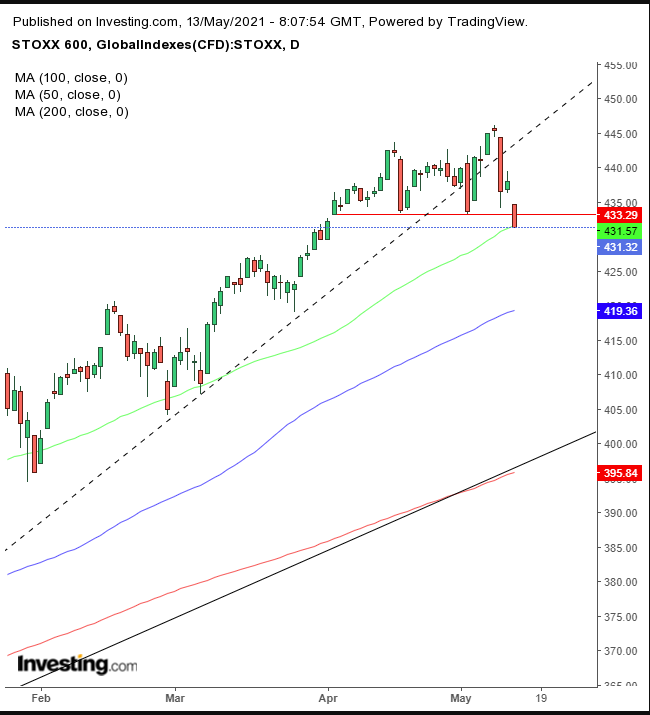
The pan-European benchmark was down 1.6% at the time of writing, its lowest level since Apr. 1. The index is completing a small top, after having violated its uptrend line since the late-October low, as the price heads towards the uptrend line since the famous 2020 bottom, guarded by the 200 DMA.
The UK's FTSE 100 also slid, dropping 2.1% at the time of writing, to the lowest since Apr. 6. However, from a technical perspective it seemed in a better position than its continental peer.
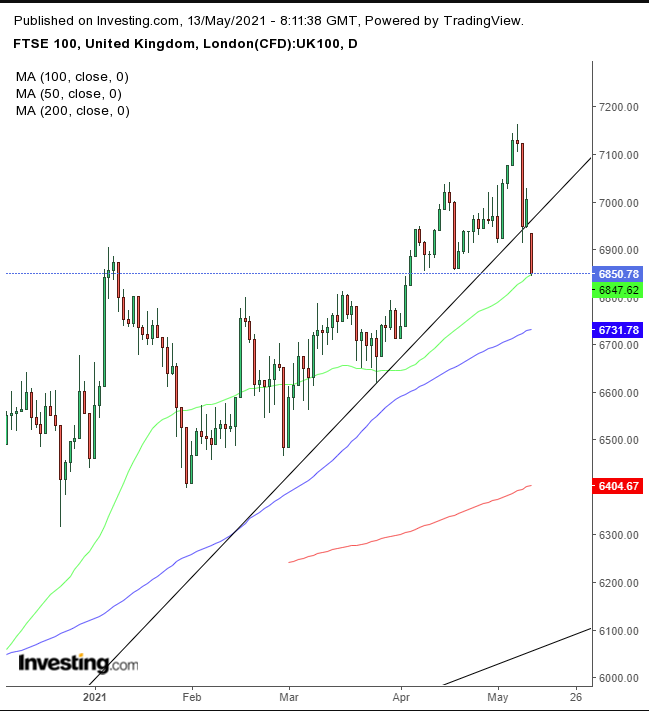
While the price did fall below its uptrend line since late October, Briton's leading benchmark has not yet decisively topped out, and may have found support by the January highs.
British luxury retailer, Burberry (LON:BRBY) plunged 8% after it announced a 10% drop in the company’s annual sales, a result of pandemic shutdowns. Telecom and broadband provider BT Group (LON:BT) also declined, after reporting a 7% slide in revenue and 6% drop in annual adjusted earnings.
British financial services group Hargreaves Lansdown (LON:HRGV) was lower as well, despite reporting record new business in the first quarter, as people increased their savings during the coronavirus lockdowns.
Asian markets sank this morning and regional gauges were on course for a technical correction. The MSCI Asia Pacific fell as much as 1.5%, which means it has fallen 10% from its Feb. 17 high, erasing all gains YTD.
On Wednesday during the Wall Street session, US stocks posted their sharpest selloff since February, after the inflation report surprised traders. The Technology sector—which has been enjoying the highest market valuations—continued to sell off, leading the market lower. Big tech names like Apple (NASDAQ:AAPL) and Microsoft (NASDAQ:MSFT) shed over 2%. Energy (+0.5%) was the only sector in the S&P 500 Index in the green. Consumer Discretionary (-3.4%) underperformed.
The CPI release confirmed investors worst fears and dispelled the Feds’ too-oft repeated promise of lower for longer, which pushed yields higher.
The 10-year Treasury note yield soared above 1.7% intraday, closing at 1.693% for the first time since Apr. 5.
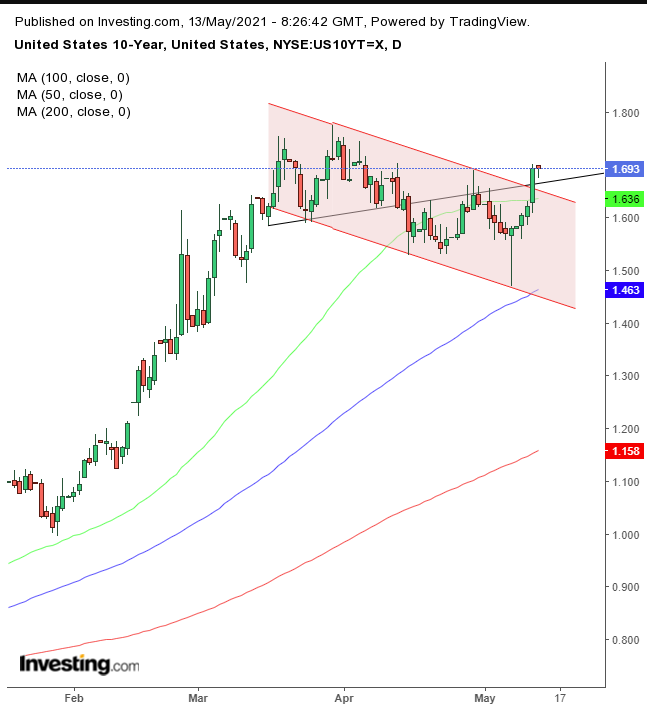
The jump took rates back above the extended neckline of a top. It also meant rates broke out of their falling channel.
The outlook for higher rates boosted the dollar, offsetting concerns of its weakening buying power, as traders are confident the Fed will raise rates, promises or not.
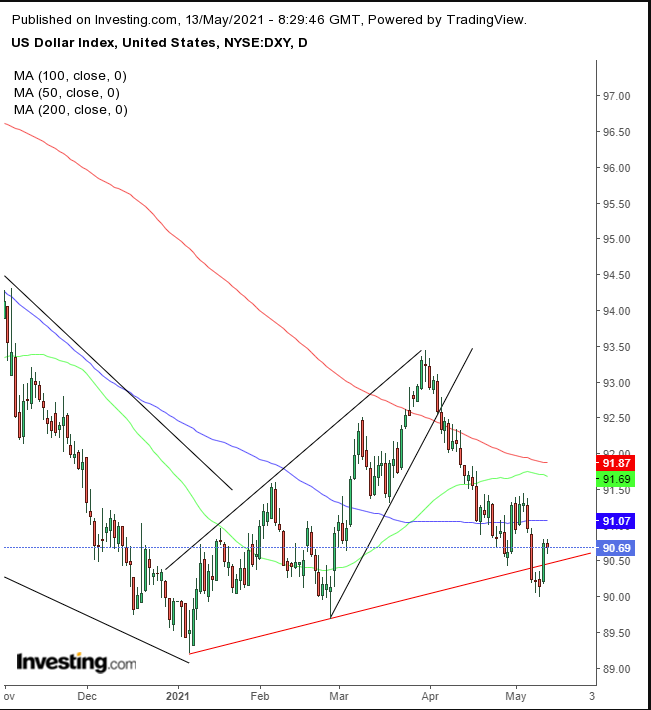
The USD stabilized after bouncing back above its uptrend line. It continues to struggle between the recent, smaller bearish wedge and the earlier, massive bullish wedge (based on our interpretation having followed a cataclysmic rise).
The stronger dollar pushed non-yielding, gold lower.
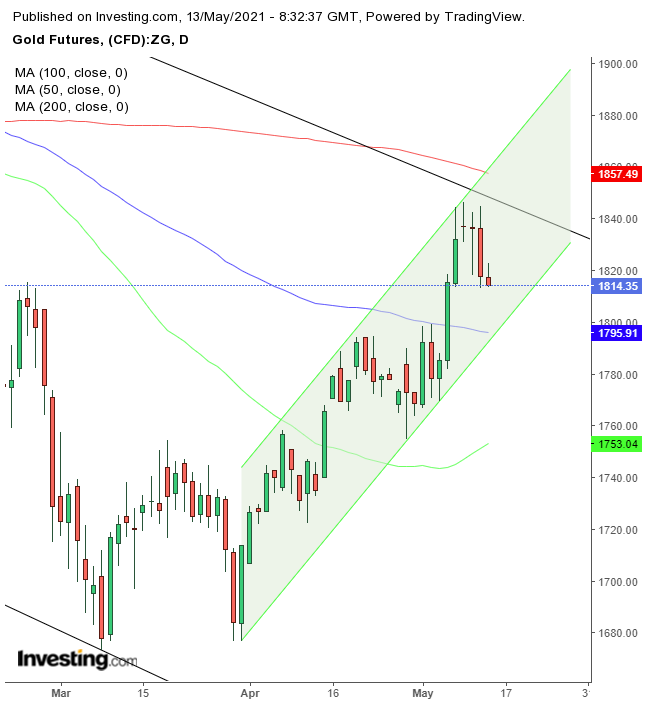
The yellow metal fell away from the area where the top of the falling channel since the 2020 peak and the top of the rising channel since the late-March low converged.
Bitcoin plunged after Elon Musk added to the gloom on the cryptocurrency when he said Tesla (NASDAQ:TSLA) will no longer accept Bitcoin as payment for its EV cars due to the “rapidly increasing use of fossil fuel for Bitcoin mining and transactions.”
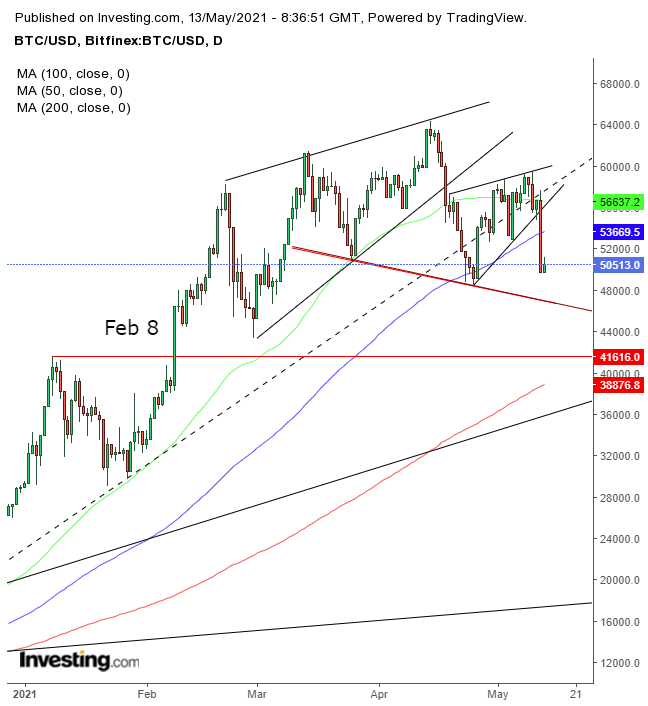
The digital currency completed its second bearish wedge in a row, as it completes a H&S top, whose downside breakout is aiming at the low $30,000s. Bitcoin enjoyed a 65% increase in value between Feb. 8 and Apr. 14 after Tesla’s announcement that it had purchased $1.5 billion of Bitcoin and will accept the digital currency as payment.
Oil fell as the Colonial Pipeline, the largest oil products conduit in the US including gasoline, which was hacked last week, restarted operations. The impact of the outage isn't fully clear at this point but it could potentially impact prices and supply going forward.
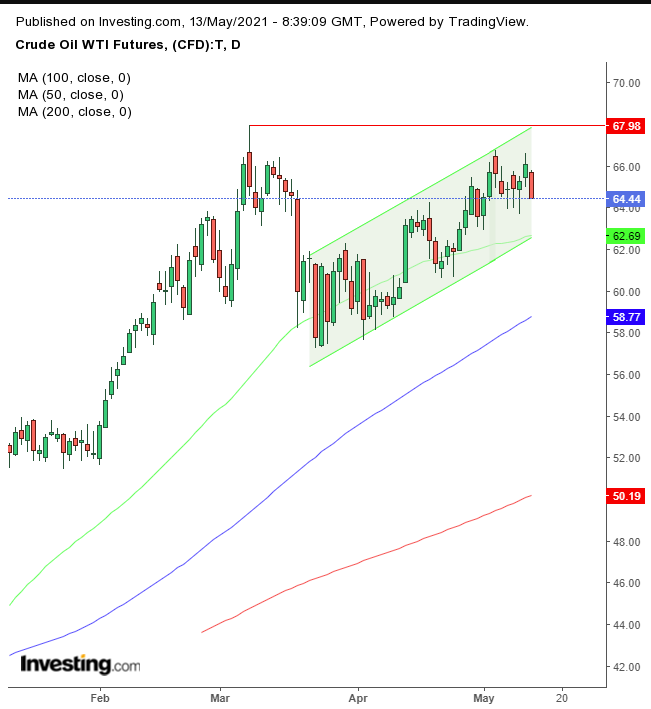
The WTI fell from the top of a rising channel that is challenging the Mar. 8 peak.
